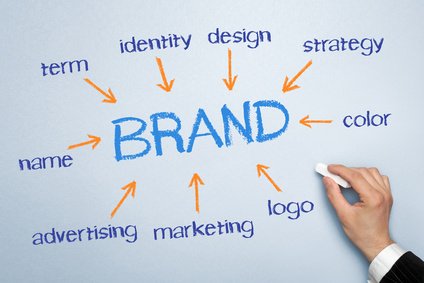A business without a brand is like a product without a name — forgettable and easily ignored. Whether you’re running a local bakery or building an online empire, branding is what sets you apart, builds trust, and keeps customers coming back.
In a world full of noise and infinite choice, branding is no longer optional — it’s your survival tool.
What Is a Brand, Really?
Branding goes beyond a logo, a slogan, or a color palette. A brand is a promise — a shortcut in the customer’s mind that says: I can trust this. I know what I’m getting. I know who they are and what they stand for.
Think about it:
-
When you see the Apple logo, you think innovation and design.
-
When you hear “Amazon,” you think fast delivery and reliable shopping.
-
Even individual creators — think MrBeast, Marie Forleo, or Ali Abdaal — have turned their names into powerful brands.
Strong branding provides consumer protection, because customers know what to expect. It builds loyalty, creates emotional connections, and even allows you to charge more for the same product.
💡 Fun fact: Apple remains one of the world’s most valuable brands, followed by names like Microsoft, Amazon, and Google. Brand rankings shift, but one thing never changes — the best brands adapt, evolve, and stay relevant.
Branding Online: Trust Is Currency
Even in 2025, people are still hesitant to buy from a random link online. Scams, shady sellers, and too-good-to-be-true offers have made people skeptical.
Trust is the new currency.
That’s why branding matters even more in the digital world. It’s how you reassure people that:
-
You’re real.
-
You’re not going to disappear after they pay.
-
You deliver value — and consistently.
Online platforms that grew rapidly — like Etsy, eBay, Shopify, or Gumroad — all work on the backbone of reputation and trust. Reviews, ratings, transparency, and consistent branding help remove buyer hesitation.
How Personal Branding Works for Online Entrepreneurs
Many successful marketers use their own names as brands — and it works.
Creators like John Thornhill, Jim Cockrum, and Kevin Riley (from your original post), or today’s influencers like Neil Patel, Alex Hormozi, or Rachel Pedersen, have grown loyal audiences by building authentic personal brands.
Here’s how they do it — and how you can too:
✅ 1. Be Real and Consistent
Your audience wants someone they can trust — not a polished robot. Consistency in tone, messaging, and delivery builds familiarity and loyalty. Be who you say you are, and never make promises you can’t keep.
✅ 2. Deliver Value Over and Over Again
The best brands solve problems. When people associate your name or business with useful content, helpful tools, or quality service, your brand sticks. People don’t just remember what you sell — they remember how you made them feel.
✅ 3. Stand Out With Style
Your unique perspective, tone, visuals, and customer experience all become part of your brand DNA. You don’t need to be flashy — you just need to be memorable.
✅ 4. Embrace Change
Technology, trends, and customer behavior are always evolving. Strong brands evolve with them. Those who refuse to adapt get left behind — just like the dinosaurs.
✅ 5. Know Your People
Successful brands are laser-focused on a niche. They understand their ideal customer deeply and create content, products, and offers that serve that group again and again.
📌 Pro tip: Whether you’re an Etsy seller, a YouTuber, a coach, or an affiliate marketer — you are your brand. Even if you’re not the face of the business, your values, tone, and consistency are what people connect with.
Final Thoughts: Brand Like a Pro, Online or Offline
At the core, business hasn’t changed — just the tools have.
In every era, great businesses were built on trust, value, and identity. That’s exactly what branding gives you. Whether you run a brick-and-mortar shop or a digital business from your laptop, the formula is timeless:
Build a brand. Give exceptional value. Stay true. Adapt. Succeed.


Leave a Reply